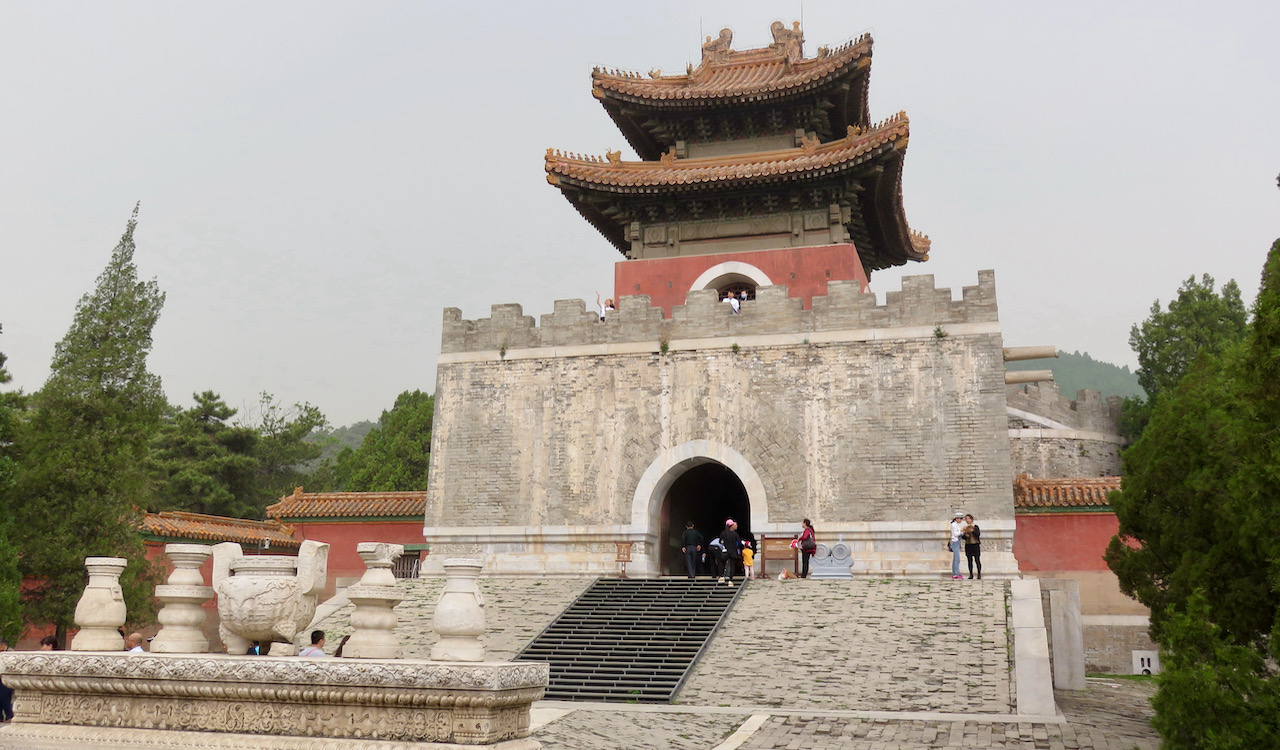
With her last few breaths she tells the toddler Puyi that he is to become the new ruler of China, thus beginning the remarkable story told in the multi-Oscar winning movie.
The dying woman is the Empress Dowager Cixi, an extraordinary figure in the history of China. The one-time imperial concubine rose to become the country’s de facto ruler for 47 years from 1861 until her death. She was the last powerful figure in a tradition of dynastic rule that had lasted nearly 4,000 years, and when she died in 1908 aged 72 the death rites lasted a year.
She’s buried a couple of hours’ drive from Beijing, at the Eastern Qing Tombs. Most Western visitors to China’s capital visit famous attractions such as the Great Wall, Tiananmen Square and the Forbidden City, the Temple of Heaven and the Summer Palace. Though less well known, the Eastern Qing Tombs are equally spectacular.

Anyone who’s visited the Forbidden City – or seen The Last Emperor – will know that it’s enormous. But the tombs site, at 80 square kilometres, is a remarkable 111 times as large, or equal to 11,204 football pitches. Everything in China seems big, but this is ridiculous.
The complex includes the graves of five Qing Dynasty emperors, and also buried there are empresses, concubines, princes and princesses. The emperors started work on their tombs soon after taking the throne, and the grand, ornate buildings were an expression of their power.
The site is included on the Unesco’s World Heritage List along with other tombs from the Ming and Qing dynasties. Unesco describes them as “masterpieces of human creative genius”. The whole place is laid out according to the rules of feng shui, and the surrounding mountains provide an imposing backdrop.
CHINA has a long, complex and often brutal history. But when I was growing up in the UK little was taught about it in schools. All that anyone knew of the Ming dynasty (1368-1644), for example, usually involved vases. So here’s a quick guide to 4,000 years of history:
For nearly four millennia, from 2070 BC, China was ruled by a succession of dynasties. In 221 BC it became a unified empire under the first emperor Qin Shi Huang (the one who was buried with the Terracotta Army in the city of Xi’an). He founded the Qin dynasty and began the construction of the Great Wall, work that continued for the next 1,800 years.
British schoolchildren are taught about the Roman empire. At its peak in 117 AD it covered 5 million square kilometres; the Chinese empire at that time extended across 6.5 million square kilometres, and eventually grew to 14.7 million square kilometres.

From 1839, China suffered what is known as the century of humiliation as it faced encroachment and subjugation by the Western powers, plus Japan and Russia. The final dynasty, the Qing (pronounced Ching, 1644-1912), ended with the abdication of the last emperor, Puyi.
China became a republic and was in time plunged into a civil war between Mao Zedong’s Communists and Chiang Kai-shek’s Nationalists. In 1949, the Communists won and created the People’s Republic of China. The Nationalists retreated to the island of Taiwan where they established the Republic of China – the similarity of the names causes confusion to this day.
On the mainland, the Great Leap Forward, a disastrous series of agricultural reforms, and the Cultural Revolution resulted in millions of deaths. Mao died in 1976, and Deng Xiaoping became China’s paramount leader. He led reforms that began in 1978 and led to the creation of the economic powerhouse we know today.







